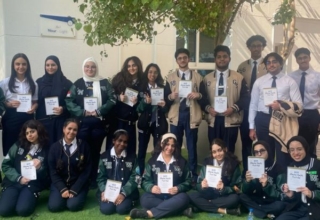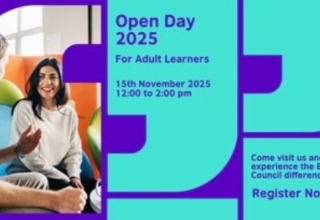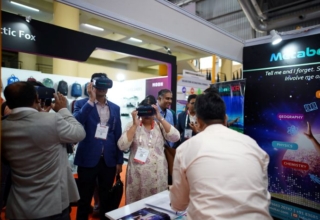The big picture emerging from lockdown and Covid pandemic about schools is early signs of several patterns that will potentially lead to a mega upheaval in the school sector in the immediate future. For those, who were reporting a popular trend about galloping expansion of private schools to even the remotest villages of country, may see a rapid reverse in coming months as these private schools, essentially social enterprises lose sheen and their promoters interest due to lack of money in the system. And, a large number of children from these schools will eventually shift to government schools.

In what would be probably among the first studies on the impact of pandemic on schools in the hinterland, Prof Pushpendra Kumar Singh, professor and chairperson, Tata Institute of Social Sciences (TISS), Patna, chose a village in Ziradei division of Siwan district in Bihar to talk about. The region is well-known for being the birthplace of India’s first President Dr Rajendra Prasad. Talking about a village cluster which has eight government schools, three of them in a single building of five rooms , Prof Singh revealed the eye opening status of other three private schools within the cluster. “One school is owned and run by the village sarpanch (village head), the other by a person funded by a relative in a foreign country and third by another person, a tutor basically. People who send their wards to these schools in rural areas are very clear, no schools, no fees. So, while the headman has engaged himself in civic and other priorities, the second has turned into a contractor of small projects and the third has taken to tuitions,” he said. TISS, Patna chairman while speaking at the RTE Forum’s webinar today (June 26) on “Impact of COVID-19 on Right to Education of Migrant Workers, ” also illustrated that the extent and spread of digital deprivation was as much within the private school matrix as in the others and there is no distinction between most private schools and other schools during closures as far as digital divide is concerned.
Giving a perspective on the migrant worker children from Bihar, Prof Singh quoting official data said that a profile data of 18.5 lakh migrants who have returned through proper official channels is available, of these 4% are below 15 years and 1% above 60 years. The rest 95% are bracketed in the age group of 15-59 and it appears those in 15-18 age band too have been listed as workers. 84% of the migrant workers back home are single males as these migrants live on low wages from less than 10,000-12000 in cities of work and live in groups to minimize living cost. There is a sizeable population of students who were coaching in Kota and other places have returned. “Except for schools and ICDS centres, much of normal life seems to have returned to villages. With this attendance based schemes such as midday meal and other DBT remain suspended as well. As we look into it, the patterns of drop outs will include many children moving towards child labor. As a matter of fact, there is no serious discussion on education at any level,” he added.
Saying that reverse migration highlighted systemic failures, Gautam Bandopadhay, Convener, Chhattisgarh RTE Forum said that pandemic has provided an opportunity to focus on devising and designing structures at state level to ensure enrolment plans and other packages that have been severely affected and exposed administrative unpreparedness. “The migrant children often face language barriers and now it will become more pronounced in this huge reverse migration and chaos,” he added.
According to Asha Mishra, National vice-president, Bharat Gyan Vigyan Samiti, Bhopal, the discriminatory policies of the government have led to more gaps in education as people are not the agenda of the present government. “The children will be exploited physically, mentally and psychologically as we have been divided into education for rich and education for poor sections. This calls for coming together of various associations and representatives from across the social strata and sectors to ensure education of children in the post-covid situation,” she said.
Prof Disha Nawani, dean School of Education, TISS, Mumbai, who moderated the webinar candidly admitted that people in power seldom read about research papers and that is how much of the good advise falls through. Responding to online education, she said content passing or information delivering is viewed by many people as education. “What these vendors do is digitize textbooks and pass it on as digital education. Education is an active dialogue.” Elaborating on the process of education Prof Singh said that education was a cognitive process, which can be best achieved by interactions including peer learning and a stimulus available in classroom environment and schools only. “If online meets these conditions are an area of research,” he added.
Speakers also expressed the view that lot of people are now bringing out surveys and talking about them but there is a need of structured and quality research to establish the impact of Covid pandemic on children, education and schools.
The quality of education in government schools will be a crucial area as there is so much needed to be done. According to Ambarish Rai, National Convener, RTE Forum there are teacher vacancies at every level and new norms like sanitization and hygiene in schools will need more resources. “As there are chances of more dropouts especially among girls, early marriages, more children pushed to child labor, trafficking, this is the time for government to take a call. We’ll keep reminding out Prime Minister that in all these months, he hasn’t once spoken about children of this country. I am happy, we have been able to build a discourse around the issues of pandemic and people understand. We have create a pressure and awareness to save Right of Children, “ he said.
For the past two months, RTE Forum has been conducting a webinar series on various aspects of pandemic and lockdown on children and education.
—Autar Nehru








